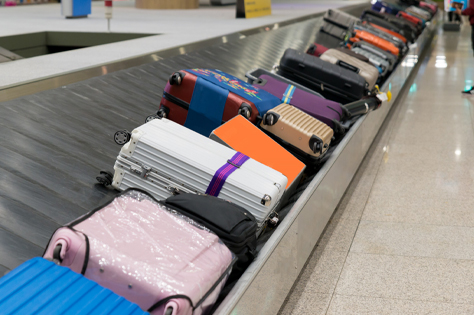
When traveling by air, we often focus on the excitement of reaching our destination, but have you ever wondered about the intricate process that takes place behind the scenes to ensure your checked baggage arrives safely with you? The integrated hold baggage system plays a vital role in the smooth operation of airports, ensuring that bags move efficiently from the check-in area to the departure gate, between gates during transfers, and finally to the baggage claim area upon arrival.
Let's take a closer look at how this integrated hold baggage screening system works to ensure the seamless and secure movement of your luggage.
The baggage screening process begins when you drop off your luggage at the check-in counter. Baggage tags, containing important information about the flight and passenger, are attached to each bag. These tags facilitate the tracking and identification of luggage throughout the screening process.
After check-in, the baggage is transported via a complex network of conveyor belts to the integrated hold baggage screening area. This area is equipped with advanced screening machines and scanners that employ various technologies to inspect the contents of each bag.
X-ray machines are a vital component of the baggage screening process. As bags pass through the conveyor, they are subjected to X-ray scanning, which creates an image of the bag's contents. Trained security personnel analyze these images to identify any suspicious or prohibited items. If an anomaly is detected, the bag may undergo additional manual inspection.
To enhance security, airports utilize specialized explosive detection systems. These systems employ advanced technologies, such as computed tomography (CT) scanning, to detect explosive materials within baggage. CT scanners provide detailed 3D images of bag contents, enabling security personnel to assess potential threats accurately.
Once the bags have been screened and cleared, they continue their journey through the integrated hold baggage system. Conveyor systems and sorting machines route the bags to the appropriate departure gate for loading onto the aircraft. These systems ensure that bags are delivered efficiently and in the correct sequence, minimizing the risk of misrouted or delayed baggage.
During transfers, where passengers change flights, the integrated hold baggage system plays a crucial role in ensuring that baggage is correctly transferred between gates. The baggage that needs to be transferred is identified and sorted to the corresponding departing aircraft. This process requires coordination and efficiency to minimize transfer times and ensure bags reach their final destination.
Upon arrival at the destination airport, the integrated hold baggage system continues to operate, guiding bags from the aircraft to the baggage claim area. Baggage is sorted based on flight numbers and unloaded onto designated carousels, where passengers can retrieve their belongings.
Understanding the integrated hold baggage screening system is crucial to ensuring the safe and efficient movement of baggage in airports. From the initial check-in and bag tagging process to sophisticated screening technologies such as X-ray scanning and explosive detection systems, every step is designed to prioritize passenger safety and security.
GEMS is a leading provider of Integrated Hold Baggage Screening Solutions (HBS) that meets the 100% hold baggage screening requirements set by authorities and airports worldwide. GEMS understands the importance of ensuring high throughput rates while minimizing inconvenience and delays, and its solutions are designed to achieve these goals effectively.
What sets GEMS apart is its comprehensive approach to HBS. We go beyond simply installing screening machines and offer various services catering to each airport's requirements. With their extensive knowledge and experience, GEMS can implement the optimum solution tailored to the specific needs of an airport.
If you need any services, drop us a mail at Rohitkumar.Singh@gmrgroup.in or get in touch with us at +919717199753.